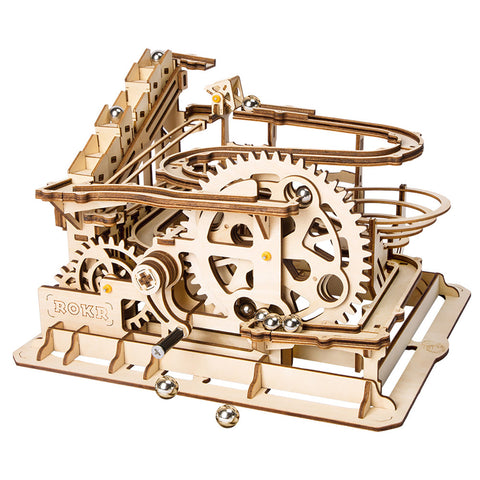
What Next After Lego?
What Next After Lego?
Lego - known by everyone and for many of us, full of happy memories.
However, we are often asked by our customers, what comes next?
What comes next?
How do you take the amazing skills that they have developed and capitalise on these?
They have read complex instructions, put together intricate details and been really proud of what they have done, but we want them to try something different.
What you can do alongside this so give a variety of experiences, textures to work with and different outcomes?
Here are some suggestions that we have discovered for children of all ages who are ready for a bit of a change!
Try A Different Material
Following instructions and sequences of pictures to put together a model is a great start. However, wood, metal, paper, fabric all bring different challenges. You may have to wait whilst the glue dries, measure and make folds in the material that are non-standard and require accuracy or find a way of manoeuvring pieces so that they work in a particular sequence.
We love wooden kits and the Timberkits range is a great example of this. The drummer has pre-engineered pieces, but requires glue and time to ensure that the parts move in sequence and give the end result. Also, if you are not careful, wood can snap or require sandpaper - all new experiences.

Try models where you need to build in steps
Key to model making is one component interacting with another to make a movement or reaction. This means that the sequence is all important, and then working backwards to identify where a potential mistake has been made. One wrong move, and your model may not work - this risk is a great skill to learn, as is repairing a mistake and finding a different way to solve the problem when you have gone wrong.
We think these marble runs are a great example of this. Again, working in wood, you will need to connect the pieces to push and pull others and ensure that the are positioned accurately. The laser cut pieces mean that much of the precision is done for you, but get them in the wrong order and everything might jam up! Laser cutting also usually means that you can pull apart and rescue - also fascinating!

Try Creating Your Own Pieces
Moving on from laser cut pieces and pre-engineered shapes means that if the piece don't fit, you have made it wrong!
Origami and sewing are great examples of this type of construction - you need to fold in the right place, cut the line accurately, join two or more pieces together to make a new shape.
We think this origami kit works well as a starter - the pieces are easy to put together and the instructions are very clear, but the maker is in charge of creating components based on the instructions. A really different challenge.

Try Something With An Open Ended Outcome
Many construction kits have a particular end product that you will create - children love this as they know when they have finished and what success looks like - no problem with that! However, what if you could continue to create with the model you have made rather than leaving it on the shelf to admire?
This set of hydraulic machines have so many different moving elements and once you have built them all, you will understand just what can be done. Now create your own based on this knowledge - you can reuse the equipment and combine it with your own materials and make moving models that will do what you want them to do...

Try Something Which You Need To Design
No picture, no instructions, just lots of components and your own possibilities?
These marble run kits do give you a starting point and show you how to set up the equipment. However, the key here is to use these elements with your own - build around the edges, use some Lego bricks to make new obstacles, raid the kitchen and see what you find...
There is no right and wrong - you are in charge and the outcomes are up to you...
So, a whole world of different opportunities that take children to and from the bricks and into different situations.
We love anything that gives them a challenge, and hope that this has given you a few ideas that may give them a more varied birthday list!

Our top tips:
- Get started whenever you are ready - Lego is a great toy and has many different levels to enter and exit from, but construction itself is always a great challenge for children
- Try different materials and get them thinking about 3D structures that are not just square
- Find ways of saying, 'what else could you do?' or 'what would happen if you?' - children love to see other possibilities
- Let them see you having a go at building or making and let them join in
- Save scraps of whatever you are making - they are the starting points for all sorts of projects

